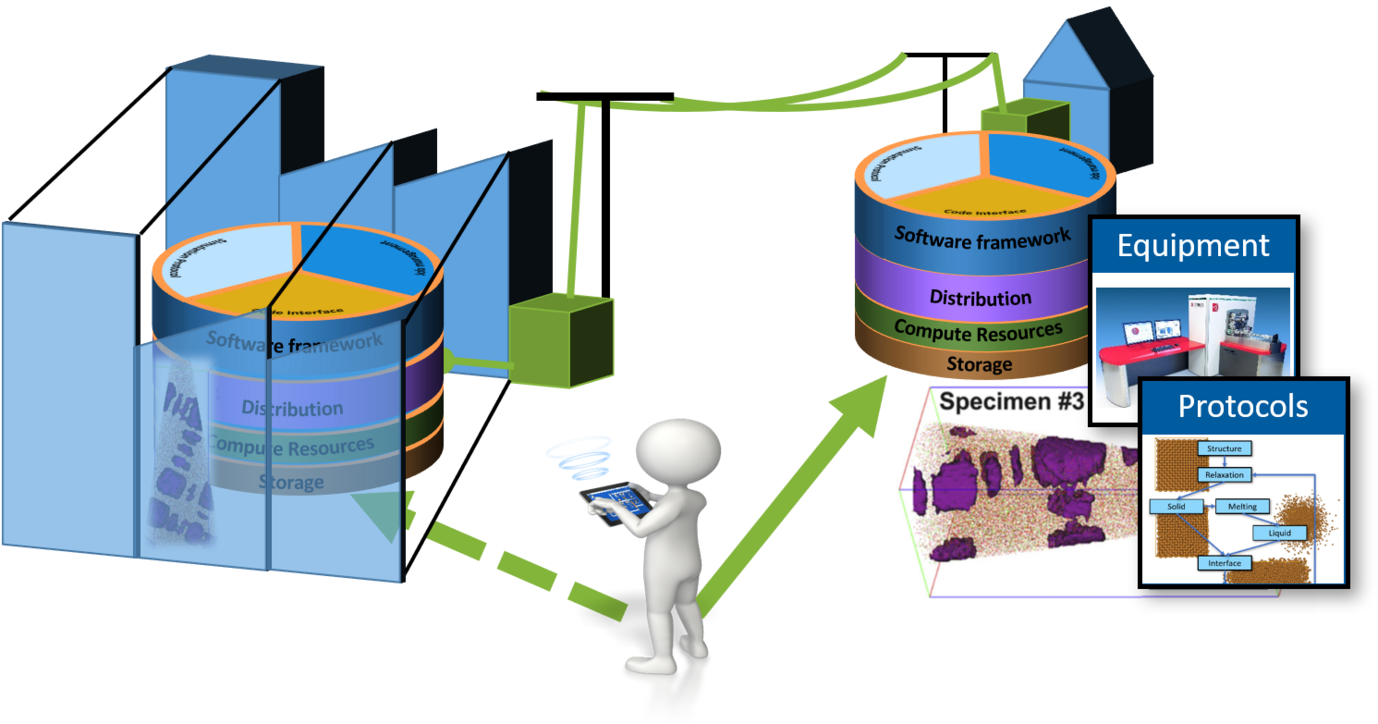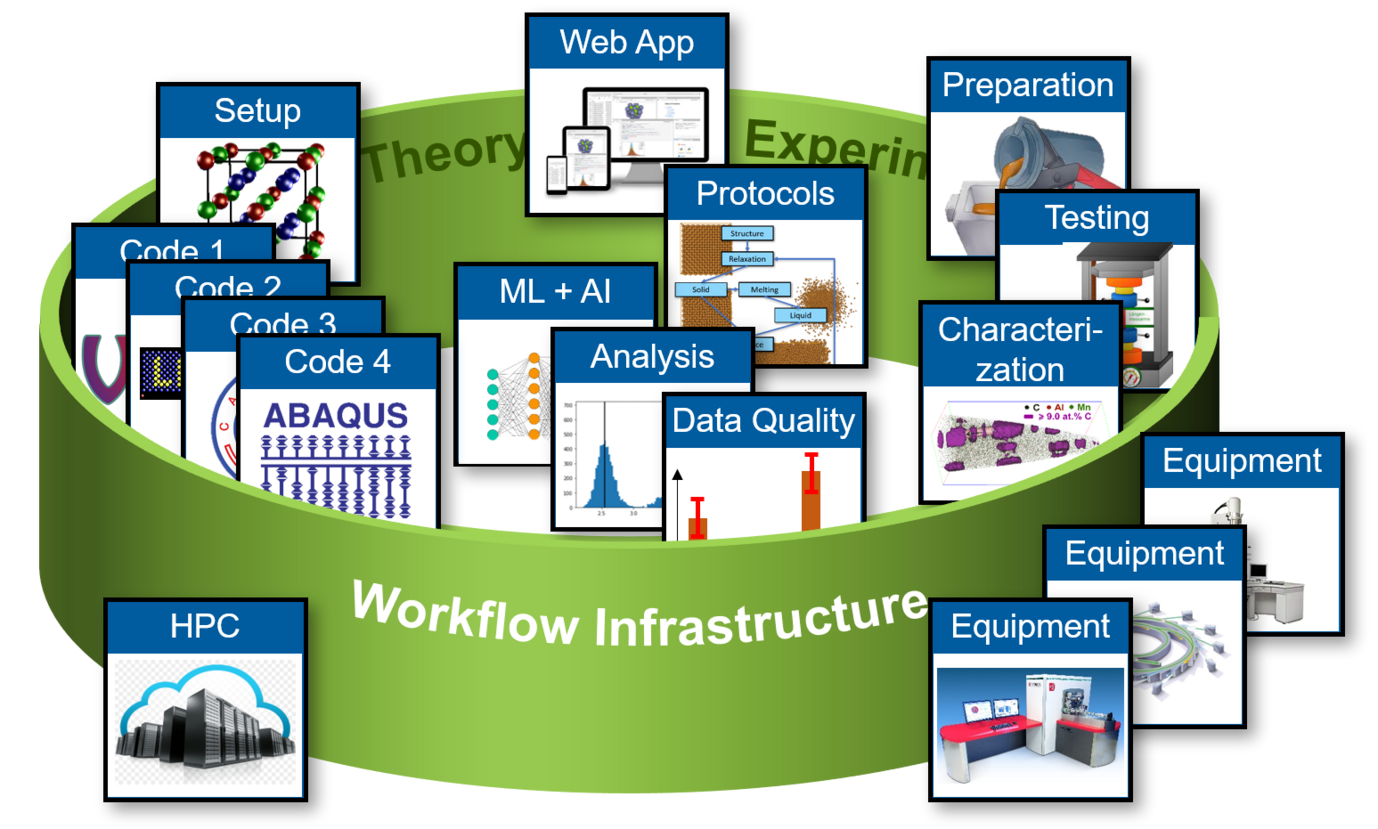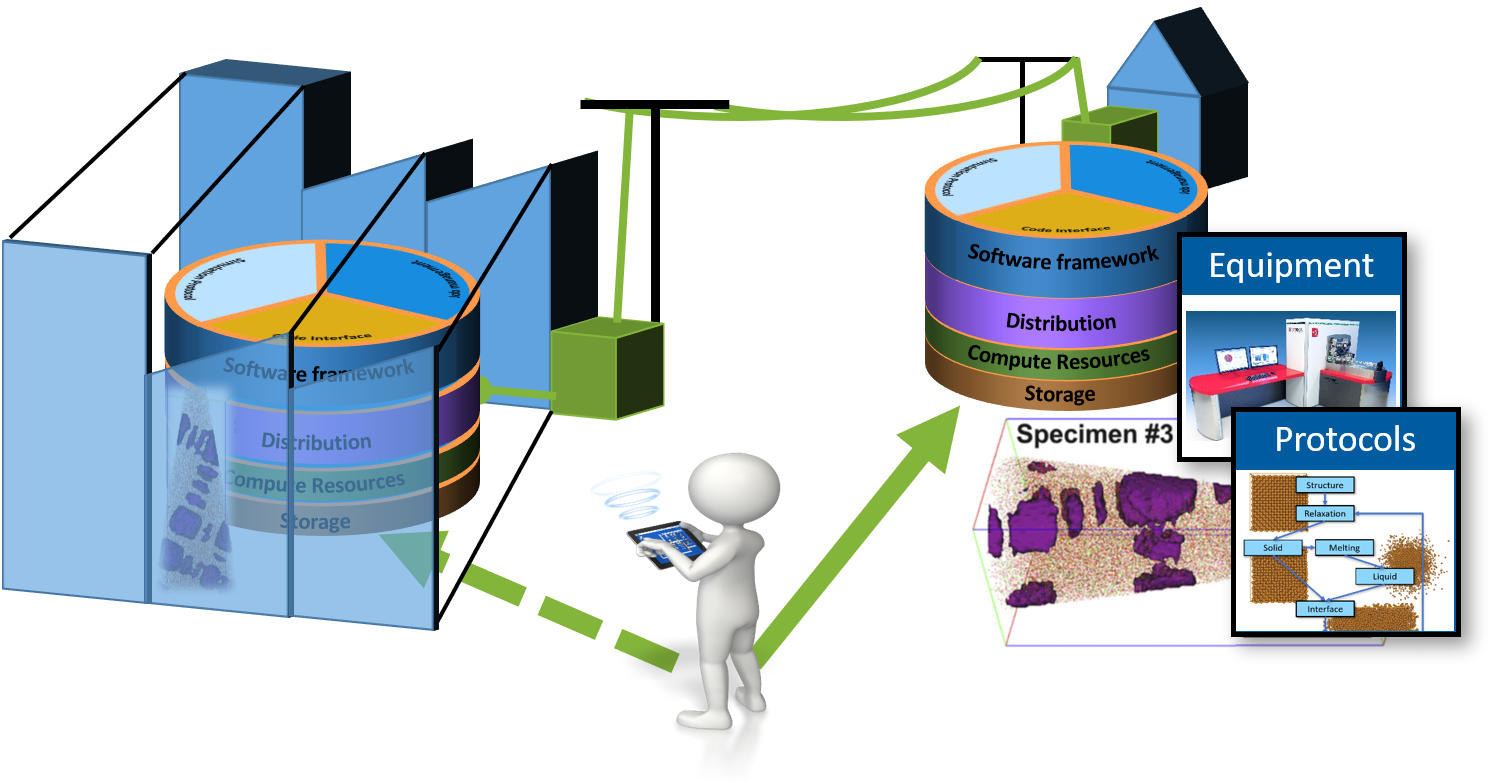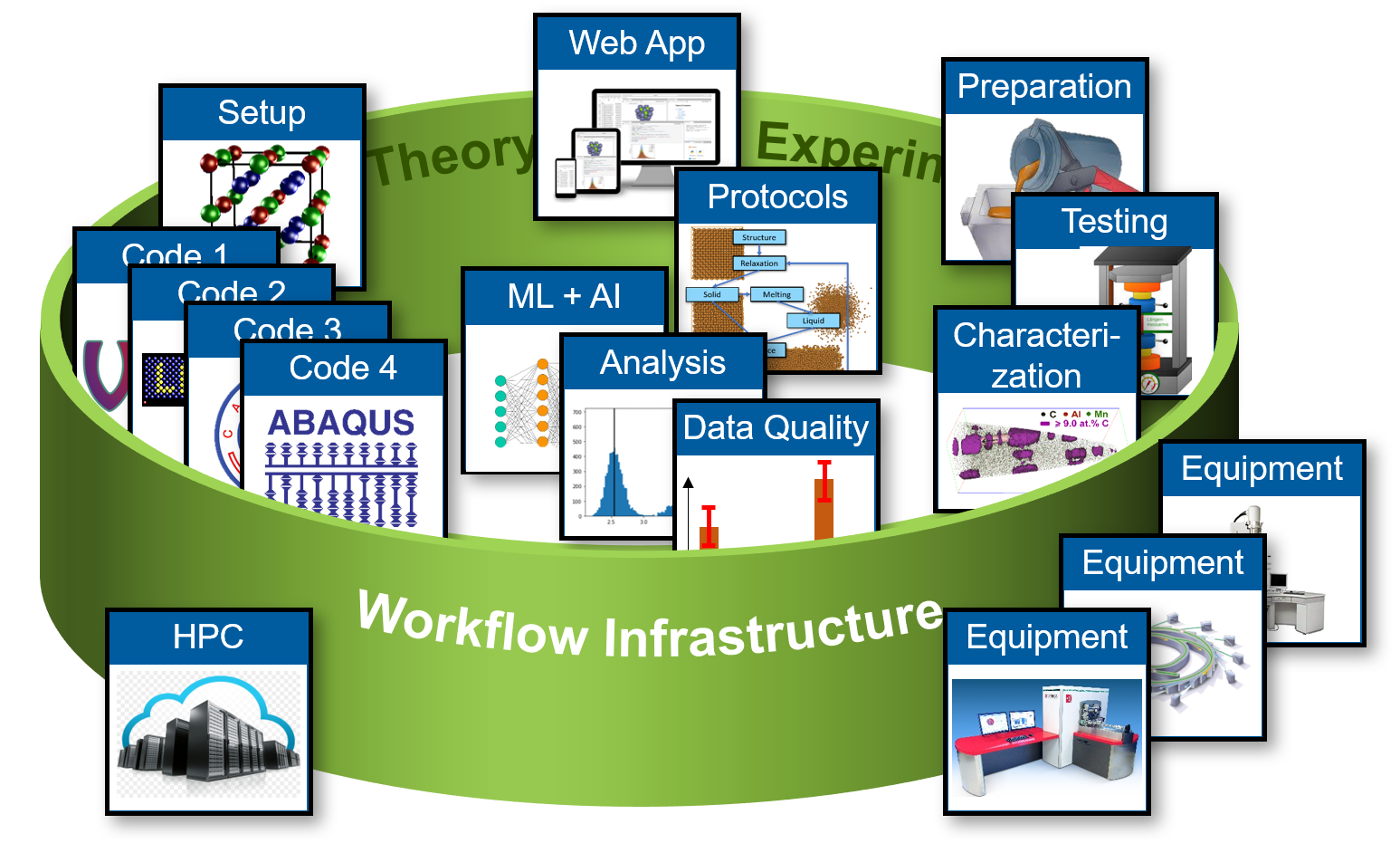Plattform MaterialDigital
PMD initiated in 2019 as a collaborative effort to facilitate digitalization of material science industry, with the focus on implementing novel and sustainable concepts to manage and share data hosted on decentralized and highly diverse servers. The CM department and MPIE with the expertise in development of pyiron has been one of the initiators and founding members of the innovation platform MaterialDigital.

The digitalization of materials science and engineering is currently addressed with highest priority in Germany. To ensure international competitiveness, there is a high motivation in German industry to implement novel and sustainable concepts to manage and share materials related data hosted on decentralized and highly diverse servers. The CM department at MPIE has gained with the development of the pyiron environment an expertise in the design and dissemination of decentralized and materials oriented software solutions and tools. To bring in this expertise, MPIE became one of the initiators and founding members of the innovation platform MaterialDigital (PMD).
The PMD has started in July 2019 as a collaborative effort of five institutions representing the societies Fraunhofer, Helmholtz, Leibniz, and Max-Planck as well as the BAM. The Max-Planck share is taken over by the CM department of the MPIE and headed by J. Neugebauer and T. Hickel. The initial phase of PMD is funded by BMBF in order to support interested parties from the industrial and academic sectors in the implementation of digitization tasks for materials. Its mission is the establishment of a virtual materials data space and the systematization of the handling of hierarchical, process-dependent materials data.
To this end, three major concepts are established by the PMD: (i) The storage and access to data will be performed in a decentralized infrastructure, keeping data at the place where they have been generated (Fig. 1). (ii) An ontological structure will be used as the basis of the information ecosystem to make data findable and accessible. (iii) Any processing of data will be performed in a generalized workflow environment to ensure the reproducibility of process chains that transform data to a particular set of outputs. In order for these concepts to be adopted by the community, the PMD also serves as an interaction and communication platform.

Using the large expertise gained with pyiron [1], the MPIE strongly contributes to these concepts and in particular to the workflow infrastructure (Fig. 2). The goal is to use the pyiron philosophy and architecture to provide scientists and engineers a user-friendly interface to a large variety of tools as well as access to standardized computational procedures that are based on complex connections between these tools. Since the CM-department is also PI for the National Data Infrastructure (consortium NFDI-MatWerk), which is devoted to digitalization in academia, our mission is to ensure a consistency of workflow standards in the industrial and academic community.
In a second call, the BMBF has selected 13 projects to develop and implement strategies for the digitalization of dedicated user stories in materials science. Being strongly connect to PMD, they represent certain materials communities. The project StahlDigital has been selected to handle ontology-based interoperable workflows for the development and optimization of steel materials from the sheet metal production up to the crash safety of components. It is coordinated by F. Roters and contains among other partners contributions of the MA and CM departments.
Additionally, CM collaborates with the projects accepted in the second call to integrate their simulation tools into pyiron workflow environment. In this regard, continuum scale simulation packages such as FEniCS and DAMASK have been already integrated to an extent into pyiron. These collaborations has also been extended to the development of ontological description of the workflows and their corresponding (meta)data.

